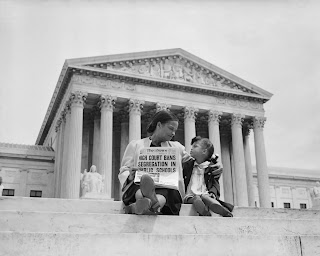Many of these abolitionists that I learned about from the Town Hall Posts had similarities, differences, but everyone I learned about all had the same mindset on the topic of slavery, and that was the desire to abolish it. Every person who was discussed in these posts lead or were apart of some sort of initiative whose goal was to reach the goal of abolishing slavery. The one takeaway that all of these abolitionists lead me to is that the problem of slavery was getting out of hand, and active contributions to fight towards the end the ongoing problem needed to be established.
Some interesting things I recognized were the connections between the beliefs of all of the people. Many of them relied and mentioned God and religion.
Sojourner Truth was a black woman born into slavery. She was the first abolitionist who mentioned God when she was separated from her family and sold along with nine sheep. She was perceived as the same worth of the nine sheep that she was sold along with. She mentioned she held onto her faith with God thought this whole ordeal. She used the faith of her religion to help her get through being separated from her family at such a young age. This whole experience caused her to start her active participation in the fight to end slavery when she took a white man to court and won the case. This would not be possible without her faith in God that she held with her since the day she was separated from her family.
Nat Turner was another abolitionist who used religion to share his beliefs on whether or not slavery should be abolished. He believed that he was a messenger from God, which caused him to start his protests, which took the form of a rebellion. He reveals his faith in God when he mentioned how he believed that the solar eclipse was a sign from God. These points show the extent to which Turner devoted his faith to God because of the way he believes abstract ideas and events were due to Gods doings.Francis Harbor was a poet and essayist, born in Baltimore, Maryland, who was born a free woman. She preached for the abolishment of slavery in the means of using her educational background. She is said to have used poems to help save the slaves as well as participate in a suffrage and women’s rights movement.
On the other hand, for example, Sojourner Truth was a slave who was born into slavery and faced all the hardships including being separated from her family at a young age and lack of education, as well as so much more. The way she preaches for the abolishment of slavery differentiates itself from the way Harbor did because she did it on a more personal level that made her audiences feel sympathy. She shared her story and her experiences to win the side of her listeners. She was so devoted about her case that she preached across the country and continued to advocate through her life.
Although Sarah Purvis was another African American born free, who takes this advantage by expressing her wishes for the abolition of slavery by writing. Since she was born free, she was able to learn to read and write as well as get an education, which is how she known for her poetry. She uses her poetic talents to write about how bad slavery was from her parents, and sharing that struggle with the rest of the world.
Henry Bibb is another example of an African American who was born into slavery and used his experiences to share and educate others as a form of attempt to abolish slavery. In 1842, after escaping slavery, he moved to Detroit to work and that’s where he started his attempt of abolishing slavery. After his escape from slavery, he became a lecturer and wrote a book based on his personal experiences to help the cause.
Many of these abolitionists mentioned each other and the same people throughout their stories.
One name that was mentioned a lot throughout these presentations was Frederick Douglass. His name was a common theme throughout the presentations when talking about who the abolitionists worked with and ran across while working on their plan to end abolition.
The first example of this is Lucretia Mott when she talks about how she worked with Douglass in 1848 at the first women's right convention. This shows how all of these abolitionists were on the same page and shared the same beliefs, which shows they were all fighting for the same cause.
William Loyd Garrison is another abolitionist who mentioned worked with Frederick Douglass. This expands my knowledge to come to the conclusion that Frederick Douglass was probably one of the most influential and committed abolitionist of this time considering the repetition of his name when talking about the subject of the abolition movement as well as the women's rights movement.
All of these abolitionists may have used different tactics to prove their point about how slavery needed to be abolished. The similar theme we see in every single one of their tactics is their endless effort to push for the abolishment of slavery and give women the rights they deserve. We use these similarities and differences to work together to see how and why each abolitionist acted in the ways they did.
.jpeg)





No comments:
Post a Comment